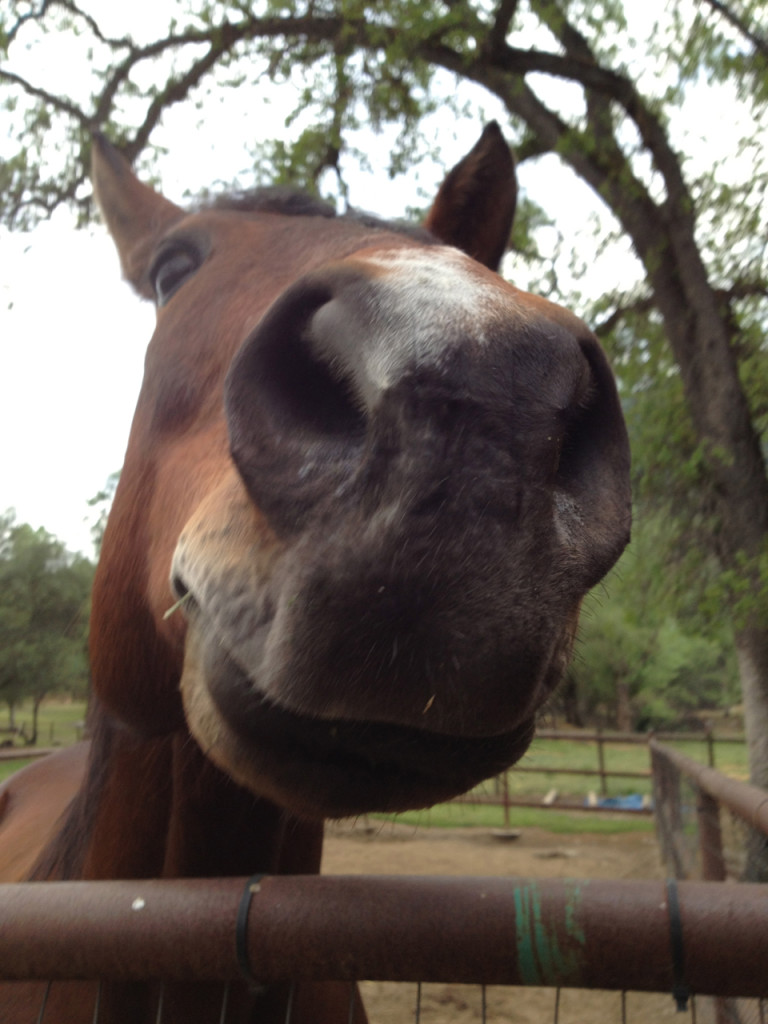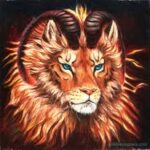
THE PEDESTRIAN’S GUIDE TO WRITING HORSES
3: Personality
The idea of the loyal mount is not a myth. Horses are, in their way, as loyal as dogs—but at the same time so unlike dogs that when they are depicted as such I get very upset. If cats are independent and dogs are loyal, then horses are somewhere in between and off to one side.
On the one hand they can be as loyal and loving as dogs—but in a standoffish sort of way rather like a cat. Horses will do what they want unless you prove you’re the boss and make them do what you want. To a greater or lesser extent. I have ridden horses that were pretty much like bicycles for all the personality they had—but these were the exceptions. The vast majority of horses I’ve ridden, including my own, definitely have minds of their own, and have their own ideas of what we should do. Usually these ideas have something to do with running home, eating the nearest plant, or arbitrarily deciding that trash can (or garbage bag, or truck, or piece of paper) is actually a horse-eating monster and is out to get us!
These general attributes aside, horses vary individually just like human beings. My advice for writers is not to think of horses as a species, but as individual characters in their own right. Because that is what they are: one horse might have had a bad experience with a black dog once, and now always takes fright at black things of that shape and size. Another might have had good experiences with dogs, and will greet even the most viciously barking dogs with perked ears and a friendly knicker.
Point is, different horses will react differently to different things. While there is a paradigm of horse-like thought, you can pretty much make any exception to it as long as you qualify it as being a “character quirk.”
Consider this, then, the default horse character, and modify it as needed:
A horse is always hungry. Horses are browsers, and tend to want to eat anything that they consider edible. If a horse is uninterested in food, it is usually a sign of illness. Typically horses consider it food if it is: grass; hay; plant life in general; fruit (especially apples); grains; pastries; candy.
Horses spook easily, as they are prey animals. They are also one of the fastest land animals at distances greater than fifty yards. This means they can outrun just about anything provided they have a fifty yard head start. So while they are naturally alert and may stop to stare at something they are uncertain about no matter how near or far it is, if something surprises them and it’s closer than fifty yards away, their first reaction is to put some distance between it and themselves. They do this by spinning around and running off at top speed (retaining the rider is considered optional at this point). This is called bolting, and is something to be avoided.
The things they can take fright at vary from the understandable (large trucks, tractors, cranes, canons, bulls, trash compactors, sirens, and—one might assume—dragons, gryphons, werewolves, Rodents Of Unusual Size, people suddenly transforming into birds or another animals, wizards shooting lightning at each other), to the surprising (a piece of paper, an oddly-shaped trash can, a man with a stick, a stick without a man, and—I imagine—talking ravens, pixie sprites, and probably Hobbits). (Things that are like but not like something a horse knows are just as bad as something new: horses will take fright at mules if they aren’t familiar with them, let alone donkeys.)
However, if the thing is beyond fifty yards off, horses are much more relaxed, being confident that they could get away if it proved to be hostile.
A horse can be trained to put up with just about anything. So you can get away with having your horse fearlessly carry its rider into battle against a lightning-shooting dragon wizard, but you might want to mention that it was specifically trained not to spook at lightning-shooting dragon wizards. And of course a horse that has spent a lot of time around Hobbits will be used to them. But even the best trained horse can still get a bee in its ears about the silliest things; they are just less likely to.
Horses are naturally lazy, unless they are excited in which case they have plenty of energy, just unlikely to channel it in the way you want them too. They will drag their feet until you turn for home, at which point they will be eager to run (but it is good horse etiquette not to run your horse home). Horses like to trot or gallop up hills, but will prefer to walk down hill. They will only do what you make them do, unless they are special magical horses or they have a Deep and Profound magic bond with their rider.
Horses are naturally gregarious creatures and prefer being in the company of other horses. Unless, like some horses, they take a set against each other when forced into close quarters. Beware especially of mares and stallions. Even horses that know each other can get into snits if forced to stand too close together. This can make doing things like attaching a lead to a horse’s halter while riding another one quite difficult. They will toss their heads, squeal, and try to bite or kick each other. It is most distracting.
Horses also have a good homing instinct. If left unguided far from home their first instinct is to return to their barn/stall/pasture. This they will usually accomplish with ease by galloping home, barring unforeseen collisions with cars or dragons.
Horses can develop friendships with other animals (including fellow horses). Cats, dogs, donkeys, and humans being the most common. Therefore it is not unimaginable that a horse might befriend a gryphon or a wyvern, given the right circumstances.
And that is about the basics of it. You can build as much as you want on that armature, especially if it’s a fantasy setting, but keep in mind that the more extreme additions should be offset with disclaimers. It is also worth noting that other equines, such as donkeys and zebras, though similar, definitely have their own unique characters.
In the next chapter I’m going to talk about practicality. What you can and cannot use a horse for, its strengths and weaknesses, and why you cannot gallop full tilt all day across a desert.
On to Chapter 4: Practicality ->
Goldeen Ogawa has been working with and around horses since she was five years old, has been a horse-owner since 2000, and currently rides every week. If you have any questions about horses not answered here you can email her at goldeenogawa@gmail.com or peck at her on Twitter @GrimbyTweets. There you can also follow her weekly horse pictures under the #TweetsFromHorseback hashtag.


























